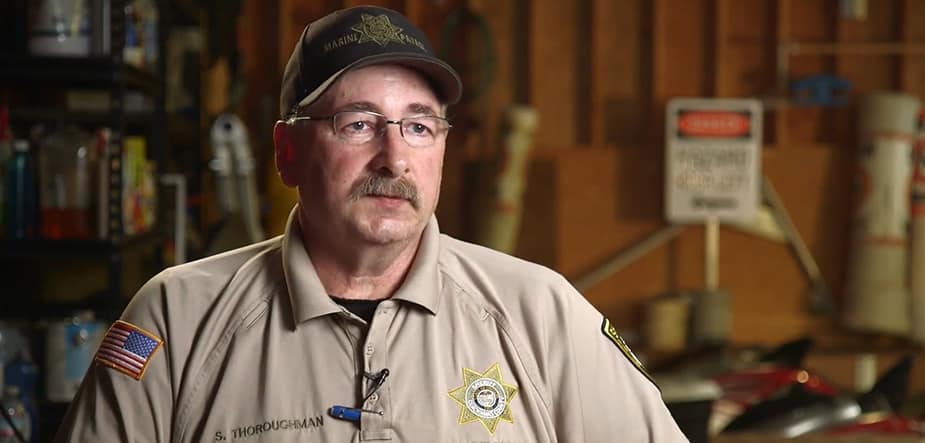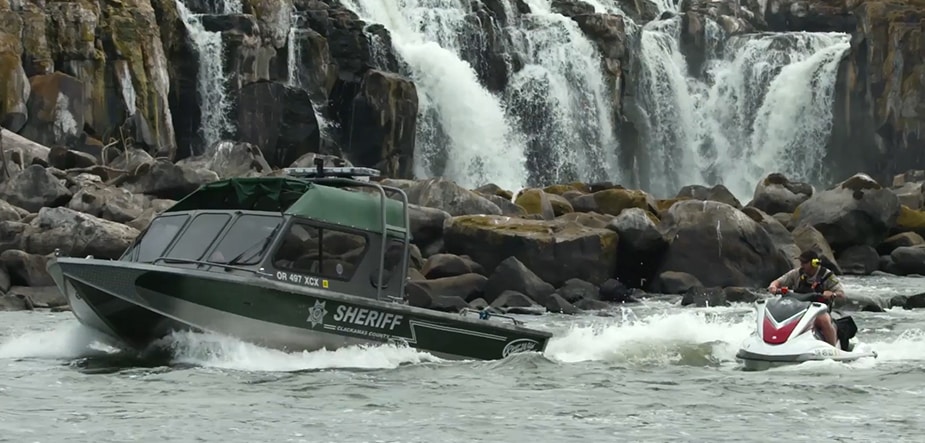Insight
Published and updated
8 Ways Wireless Marine Radio Headsets Improve Rescues
Edited: March 29, 2018
Keep your rescue crew safe, improve situational awareness, and stay agile during marine rescues. Connect and collaborate with wireless marine radio headsets.
Life-and-Death Communications
Sergeant Steve Thoroughman is all too familiar with life-and-death situations. As supervisor of Oregon’s Clackamas County Sheriff’s Office, Marine Unit, Thoroughman’s deputies respond to 90-100 rescue calls each year. Rivers and lakes in this Portland-area county can be treacherous to boaters, rafters, kayakers, fishermen, and swimmers.
Thoroughman wears a Sonetics wireless headset while piloting his boat to rescue calls. With a jet ski-mounted deputy also wearing a headset, the two can function as a collaborative unit. Here’s a list of 8 ways wireless marine radio headsets improve rescue operations, based on our interview with Thoroughman (watch the video).

8 Ways Wireless Marine Radio Headsets Improve Rescue Operations
- Hands-free: With both hands on the wheel or handlebars, drivers can still talk and make more precise maneuvers safely to reach the rescue scene as quickly as possible.
- Radio integration: Connecting a mobile phone or portable radio consolidates communications into a single unit. Operators are always connected, improving their situational awareness.
- Hearing protection: It’s loud on the water. Extended exposure to wind, wave, and engine noise can lead to noise-induced hearing loss (NIHL). Operator ears are safer with 24dB of hearing protection in their wireless marine radio headset.
- Hear what’s important: While headsets can suppress wind, wave, and engine noise, operators need to hear victims’ shouts and alarms; other voices on the boat; and equipment warnings and signals. Listen-through technology keeps situational awareness optimal.
- Fewer work zone hazards: Waves, debris, and other obstacles make for a bumpy ride. And rescue operations often require complex and sudden movements and position changes. We removed the dangling belt pack wires from the headsets so that operators can move quickly without worrying about becoming tangled in cords.
- Better team collaboration: More severe accidents require the coordination of multiple boats. Sometimes ground units need to be brought into the mix. And some locations can only be reached by personal watercraft or on foot. Constant two-way communication helps the team make decisions faster.
- Noise-induced stress relief: Operators and rescue personnel must be mentally and physically ready to act decisively. Stress and anxiety resulting from extended exposure to loud noises hinders decision making and increases risk of injury. Wireless headsets greatly reduce the constant drone of engines and wind over a typical duty shift.
- Improved situational awareness: Operators leverage all their senses and past experience when assessing a rescue operation. Listen-through technology helps operators hear what’s important while wearing wireless marine radio headsets. Being connected to all other units and the ability to be briefed and plan ahead on route to the scene also sharpen situational awareness.

“Get the job done.”
In the past 10 years, there were 46,479 boating accidents in the U.S. The collaboration and connectivity benefits of wireless marine radio headsets allow emergency responders to improve their patrol and rescue operations for accidents, breakdowns, potential drowning victims, and other marine hazards.
According to Thoroughman, “When you’re using the headset, it frees you up to be able to operate the boat and communicate to get the job done.”
What did we miss? Can you add any other advantages to using wireless marine radio headsets for marine rescues? Let us know through one of our social channels, which you can access at the bottom of this page.
Learn more about Sonetics solutions for patrol boats, fireboats, workboats, airboats, and more.